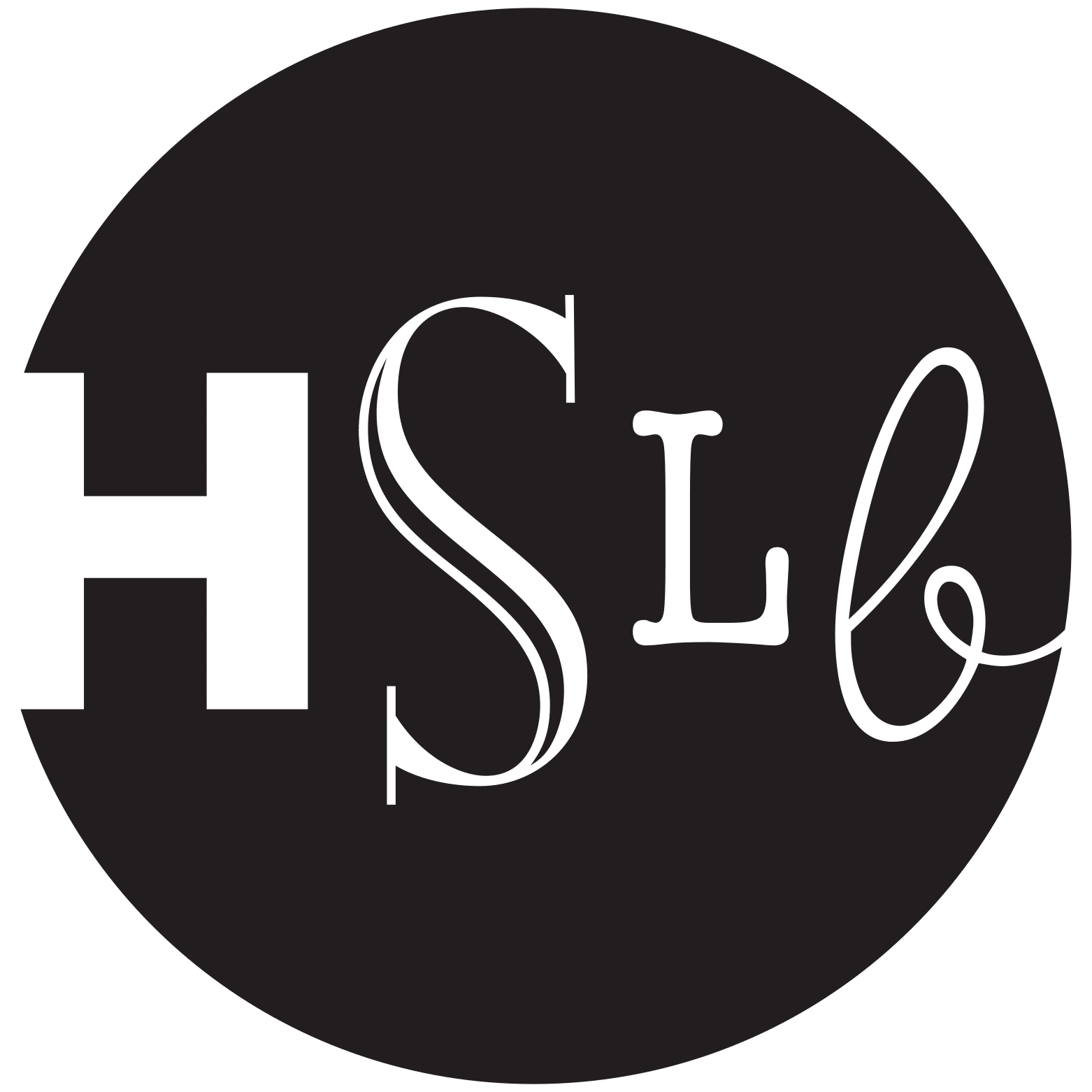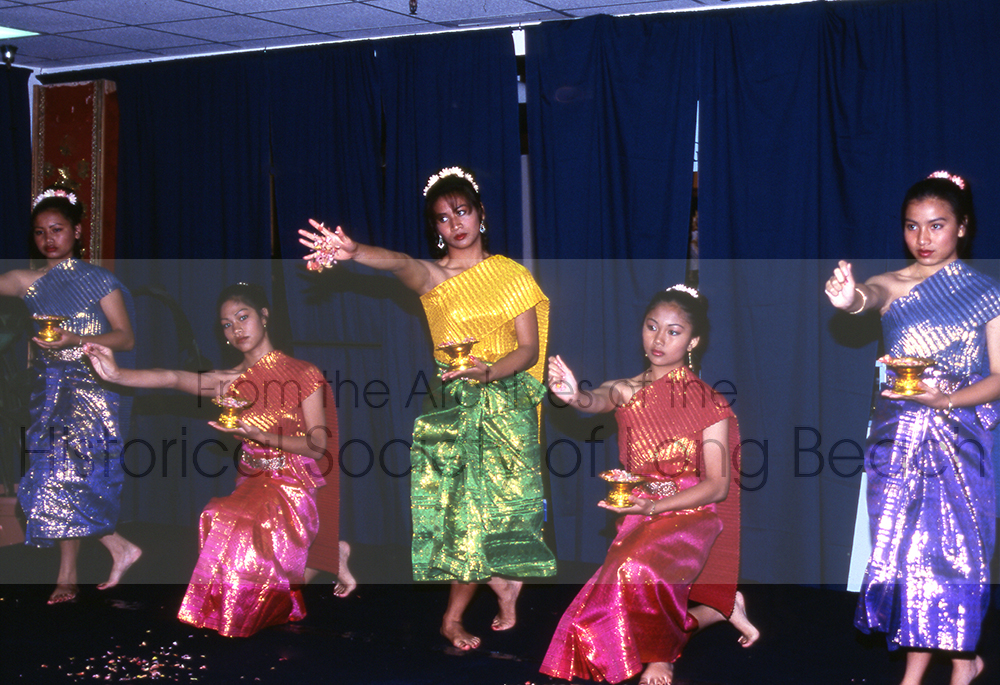This page provides links to documents, images, videos, and sites offering a historical overview of various aspects of Cambodia’s history and culture. It is not complete but provides a starting point. One of the most important things to keep in mind while exploring these materials is that although the horrific events of the late 20th century are directly linked to the arrival of large numbers of Cambodians to the United States, Cambodians have a 2,000-year cultural history they have drawn from to rebuild their lives here. Additionally, a culture cannot be fully understood through just one activity or historical event but needs to be understood as a system of values, attitudes, and beliefs that have developed over time. Cambodia’s ancient culture and its symbols are centrally important to Cambodians in the diaspora. The materials in this section provide historical context to Cambodian history and culture.
The page begins with a section containing several documents and external links to sources with timelines, maps, and general history of Cambodia. The next section focuses on the Khmer Empire (9th-15th CE). Next are resources and information about the Khmer language and writing system. This is followed by materials covering some aspects of Cambodian Arts, including dance, music, literature, silk production, and clothing. Because the arts were passed down directly from a master practitioner, we have included materials related to a ceremony known as Sompeah Kruu, which is performed by teachers and students for most all traditional arts and trades in Cambodia. This is followed by sections on Cambodian Buddhism, Holidays, and cuisine.
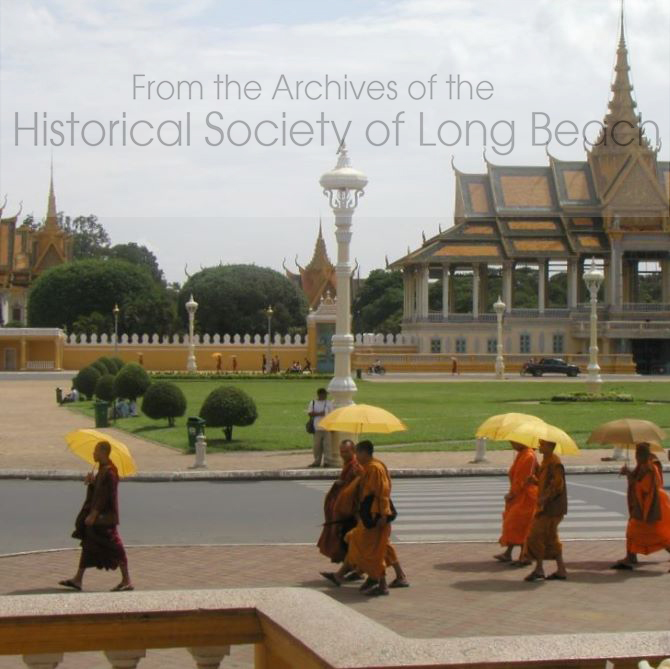
This section provides links, images, documents, and video on several areas of Cambodia History and Culture.
Documents
✧ Introduction to Cambodian Culture
Additional Resources
✧ Asia Society: “Cambodia: A Historical Overview”
✧ Encyclopedia Britannica: “Cambodia”
✧ Cambodia Tribunal Monitor: “Cambodian History”
✧ U.S. Library of Congress: “Cambodia: A Country Study” (1987)
✧ Yale Genocide Studies Program: “Chronology of Cambodian Events Since 1950”

The Khmer Empire existed from the 9th to 15th centuries C.E. At its height, the empire extended from the Issan region of what is today northeast Thailand to the Mekong Delta in modern-day Vietnam. The city of Angkor located just north of Cambodia’s Tonle Sap Lake, had a population of nearly one million making it the largest urban complex of the pre-industrial world. Angkor is a source of Cambodian pride and the wellspring of symbols and images drawn upon for personal and national identities. For more information, check out this PNAS article
ANGKOR WAT
Angkor Wat, which means temple city, is one of the most well known and beloved symbols of Cambodian culture and achievement. It was built at the height of the Khmer Empire in the 12th century by Suryavarman II and was dedicated to the Hindu god, Vishnu.
Images





Documents
✧ Los Angeles Times: “Angkor was a city ahead of its time” 8/14/07
Videos
Additional Resources
✧ Virtual Angkor: Teaching Modules
BAYON
Another temple of importance in Cambodian history is Bayon, built by the Buddhist king, Jayavarman VII in the 13th CE. During his reign the Khmer Empire reached its greatest extent and included most of modern day Thailand, Laos, and south Vietnam.
Images
Documents
✧ Coloring Book of Cambodian Cultural Symbols.pdf
✧ The Press-Telegram: Land of the Smiling Buddha

Traditional Cambodian culture centered on the daily activities of the Wat, the Khmer word for the Buddhist temple. The Wat was not only the religious center, but also the social and educational center of village life.
Images





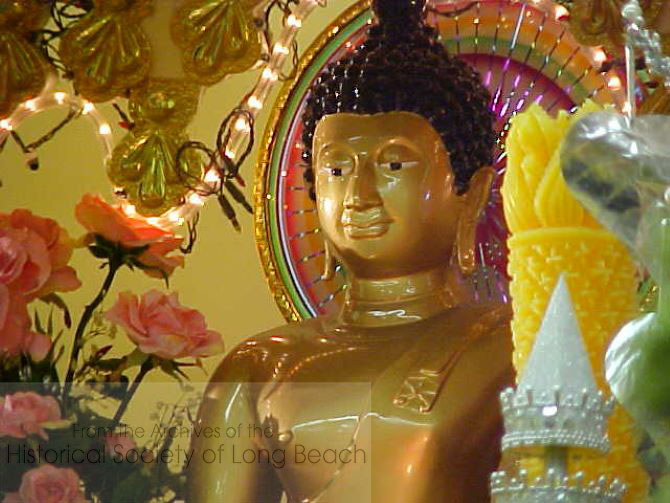

Ordination as a Buddhist Monk
Buddhist monkhood is not always a lifetime commitment. There are guidelines for when a man may enter the monkhood and disrobe. Ordination and dis-robing are not taken lightly, but for the most part, it is at the individuals’ discretion and intention. Prior to the Colonial Period, the local Buddhist temple was the seat of learning and all males spent time in the temple school learning how to read and write. The ideal was for every young man to be ordained and spend some time as a novice monk. The young man’s ordination earned his family merit, most especially his mother.
Images
✧ Monorom Neth, a Cambodian American in Long Beach, CA spent time as a novice monk at a temple in Lakewood. See his family photos and descriptions
Personal Accounts

Khmer (Cambodian) language is part of the Austroasiatic Language Family, which includes Vietnamese and Mon languages. The Khmer writing system uses aspects of both an alphabet and a syllabary (alphasyllabary). The writing system is based on a Pallava script from southern India. It has 33 consonant symbols, 24 dependent vowel symbols, and 12 independent vowel symbols. It is written from left to right, top to bottom of the page, and without spaces between words.
Documents
✧ Long Beach School District Example Khmer Language
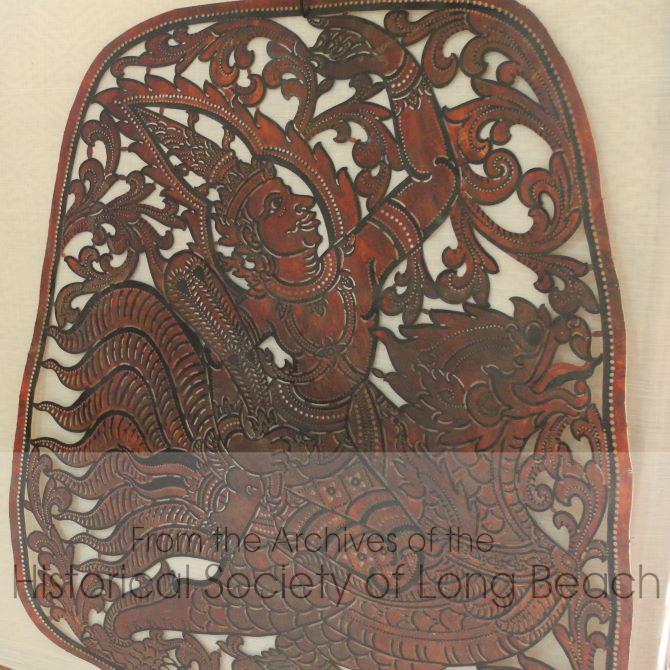
The Cambodian dance, music and material arts of today are remarkably similar to those depicted on the walls of the great temples of the Khmer empire from the 12th and 13th centuries. In the wake of war and violence, Cambodians throughout the world feared their country and culture would soon be destroyed and those who could, sought to teach what they knew to their children so it would not be lost. Dance troupes, music ensembles, and artists have worked hard to preserve their art forms and transmit their knowledge to a new generation growing up in the United States.
DANCE (ROBAM)
Dance holds great significance in Cambodian culture, serving as both a social activity and a symbol of the culture, history, and people. Cambodians can trace the roots of their dance styles back to the Angkor period (9th to 14th centuries), and they often refer to dance as the “soul” of their people. According to a 10th-century inscription, Mera, an Apsara (celestial dancer), is regarded as the mother of the Khmer people. Various types of dances exist, including social group dances, regional folk dances, and formalized classical dances and dance-dramas that portray mythico-historical narratives.
This section connects with how dance was revitalized in the refugee camps and became a significant symbol of community building. Recreating Cambodian dance and its accompanying music posed many challenges. During the early days of resettlement, only a few individuals possessed the knowledge and expertise to perform and train others in this art form. Additionally, the creation of costumes presented a daunting task, requiring materials not readily available in the U.S. With limited resources and guidance, individuals had to rely on their memories to recreate the intricate costumes, headdresses, and masks.
Images
Temples built during the Khmer Empire were faced with sandstone and have thousands of images of Apsara (celestial dancers) and Devata (goddesses) carved into them.
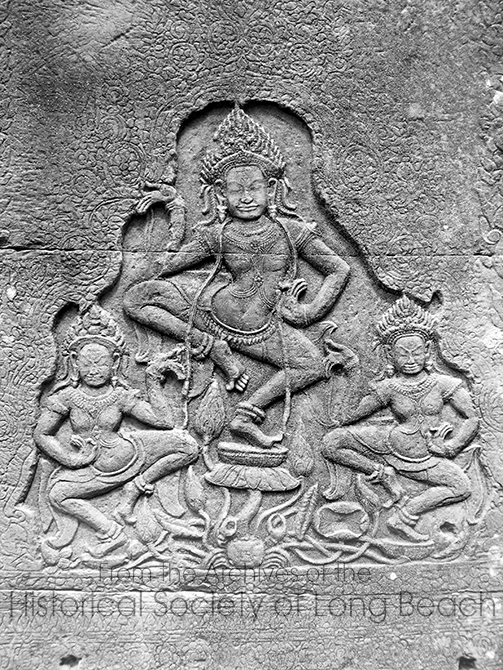



Documents
Additional Resources
✧ Devata: Khmer women in divine context
Dance Theater – Sbek Thom (Large Shadow Puppets)
Documents
Additional Resources
Suggested Readings:
✧ Sbek Thom: Khmer Shadow Theater – Pech Tum Kravel (1995)
✧ Sbek Thom – UNESCO Report (2014)
✧ Reimagining Culture & Tradition Through Cambodian Shadow Puppets – Alexxandra E.A. Salazar (2023)
Folk Dance: Cambodia has many kinds of folk dances once found throughout the country.
Additional Resources
✧ Folk dances – Sounds of Angkor!
Robam Nesat (The Fishing Dance)
Robam Nesat, also known as the Fishing Dance, is a popular folk dance that provides a glimpse into the daily life of Khmer farmers and fishermen. Through graceful movements and the use of traditional bamboo fishing equipment like Ang Rut and Chhneang, this dance encapsulates the essence of Cambodian culture.
During the performance, two distinct methods of catching fish are portrayed. Women skillfully scoop water from the river using Chhneang, braided bamboo baskets that act as strainers. As the water passes through the bamboo strips, small fish become trapped in these baskets. Meanwhile, men use Ang Rut, bell-shaped traps, to catch larger fish in shallow waters.
Love, romance and courtship, are popular themes depicted in Khmer stories and dances, such as Robam Nesat. Traditionally, young people in Cambodian society had limited opportunities to interact, but the fishing activities provided a chance for them to meet. The dance culminates in a courting scene.
Images

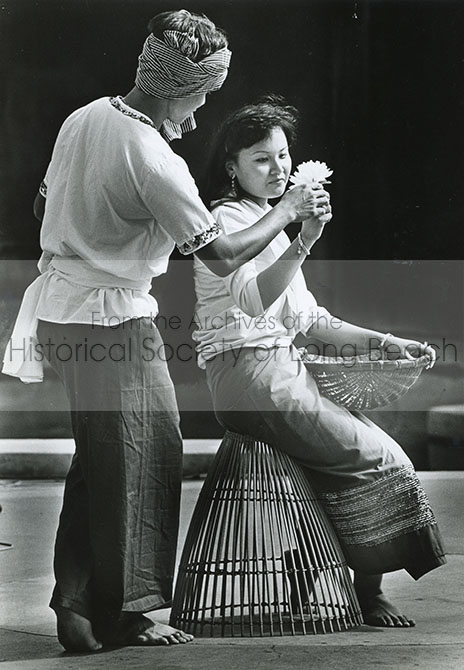
Additional Resources
Robam Kous Traloak (Coconut Dance)
Images
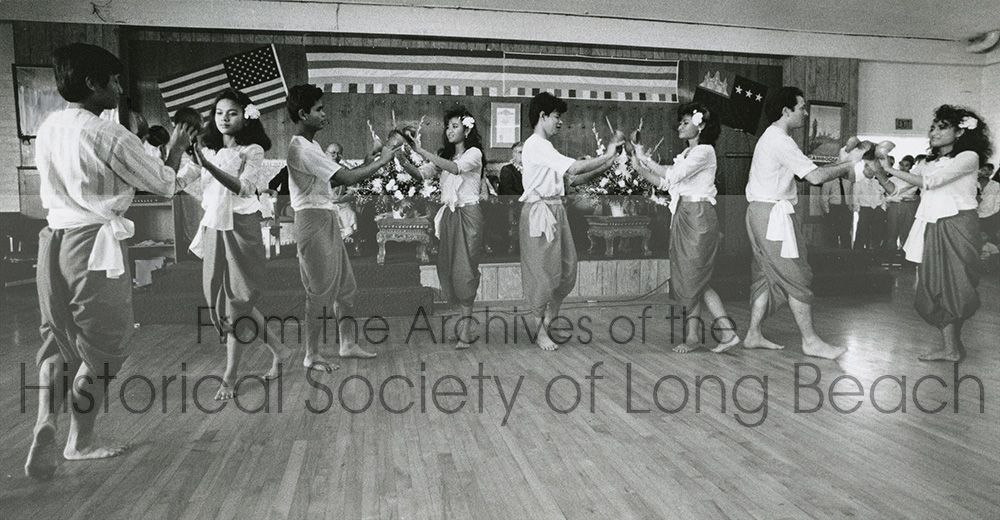



Additional Resources
✧ Robam Kous Traloak (Coconut Dance)
Robam Chhayam
Chhayam is a percussion group that usually leads a procession. The instruments include drums and cymbals. The lively and rhythmic music set the pace for the procession and encourages audience participation and excitement.
Images








Documents
Videos
Robam Trot
This dance is performed during Cambodian New Year celebrations to send off negativity and bring good fortune into the new year.
Documents
✧ Trot
Popular Music and Dance
The 1960s and early 70s are remembered as a “golden era” for Cambodian arts and architecture. Cambodia embraced Rock ‘n Roll and produced several popular bands and singers. The most popular among these were Sinn Sisamouth and Ros Serey Sothea.
Documents
Videos
Additional Resources
✧ Suggested Reading: Cultures of Independence: An Introduction to Cambodian Arts and Culture in the 1950’s and 1960’s – Ly Daravuth & Ingrid Muan (2001)
MUSIC
Several kinds of music ensembles with a variety of wind, string, and percussion instruments are used in Cambodian music. The two highlighted here are Pin Peat (associated with formal and religious occasions) and Mohori (associated with weddings and other kinds of social gatherings).
Images







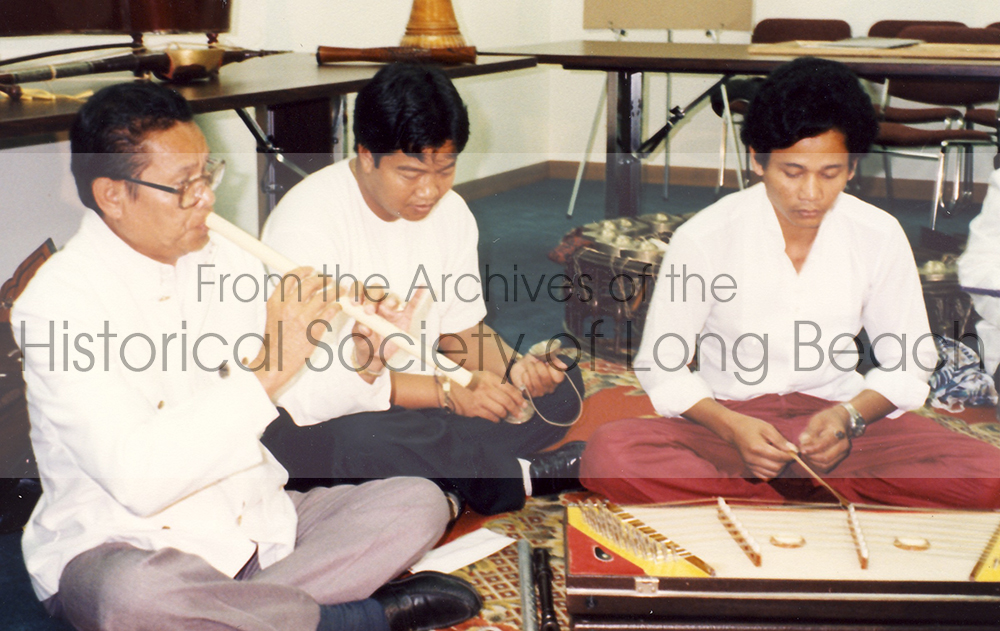







Documents
✧ Khmer Traditional Instruments
✧ Tro Cambodian stringed instrument
Additional Resources
✧ This book is an introduction to Cambodian music and dance. It includes simple songs, musical notation, and images of instruments: Silent Temples, Songful Hearts
LITERATURE
Cambodia has a rich and extensive literature extending from the early days of the Angkorean Empire to modern times. Early writing in Pali, Sanskrit, and Khmer vernacular are found in stone inscriptions, palm leaf books, and, since he 20th century, print. Early genres were mainly religious and didactic poetry. Under French rule, authors began writing short stories and novels in French and Khmer. Today, Cambodians throughout the world have continued the tradition of writing that now includes autobiographies, plays, and graphic novels.
Documents
Videos
SILK PRODUCTION AND WEAVING
“Khmer Ikat has survived since the times of the Angkor Dynasty. Craved into the temples of Angkor Thom you can see figures in the traditional Khmer costume. It is these centuries-old traditions that bring its craft such quality, that and Cambodia’s unique natural environment” (from Institute of Khmer Traditional Textiles – IKTT).
Additional Resources
SOMPEAH KRUU (Honoring the Teachers) ceremony:
The arts and other professions are sacred in Cambodian culture. Teachers (including parents, who are our first teachers) are venerated. To honor their former and current instructors for sharing their knowledge, current students and their teachers perform a ceremony called Sompeah Kruu. The ceremony was performed the third Thursday of each month.
Images

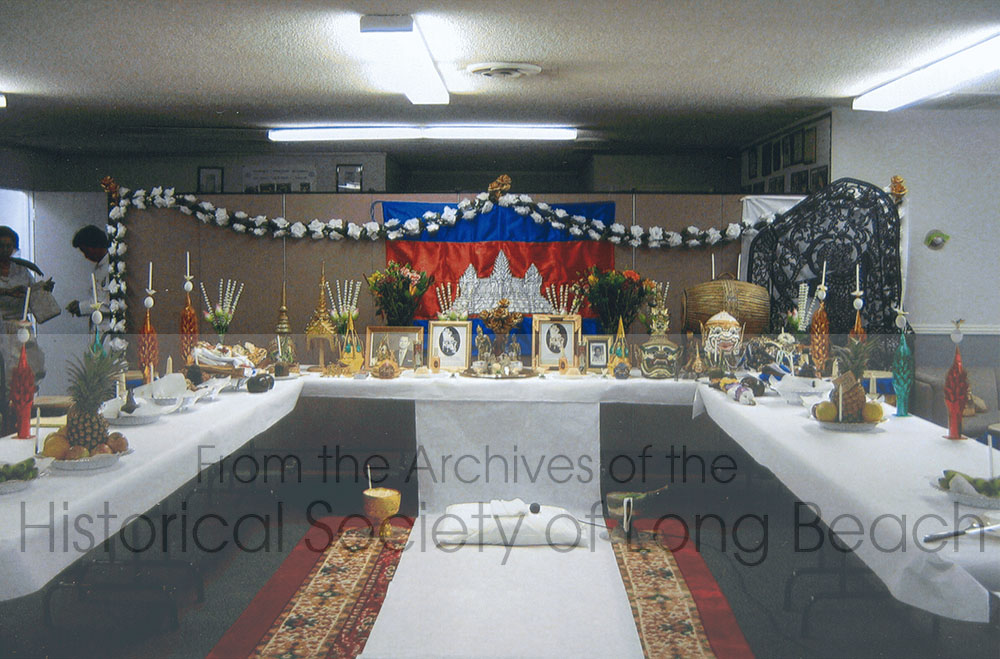
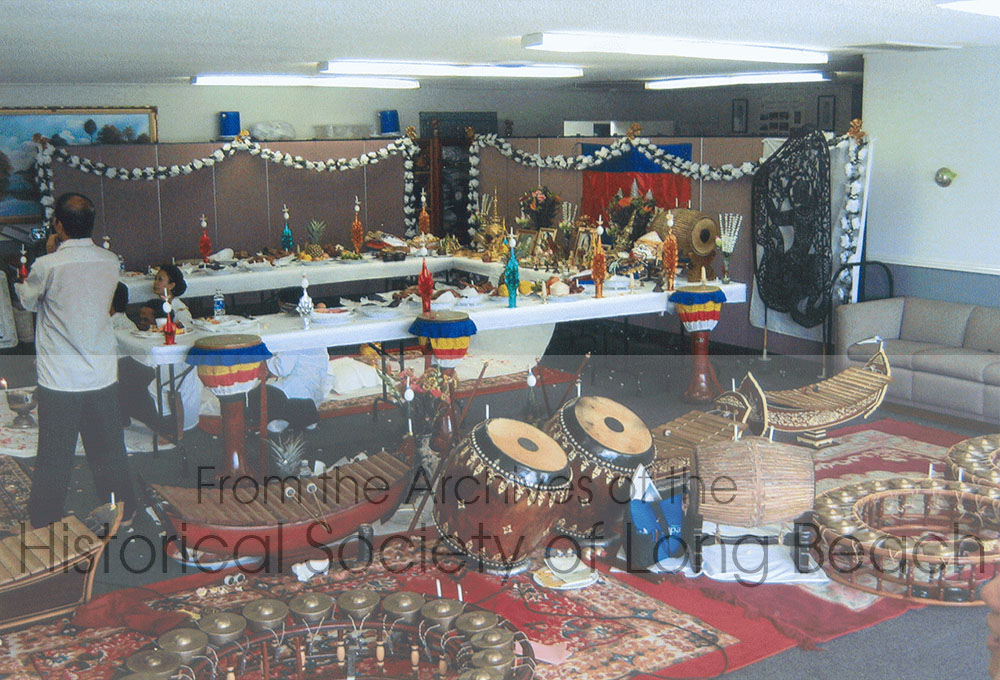

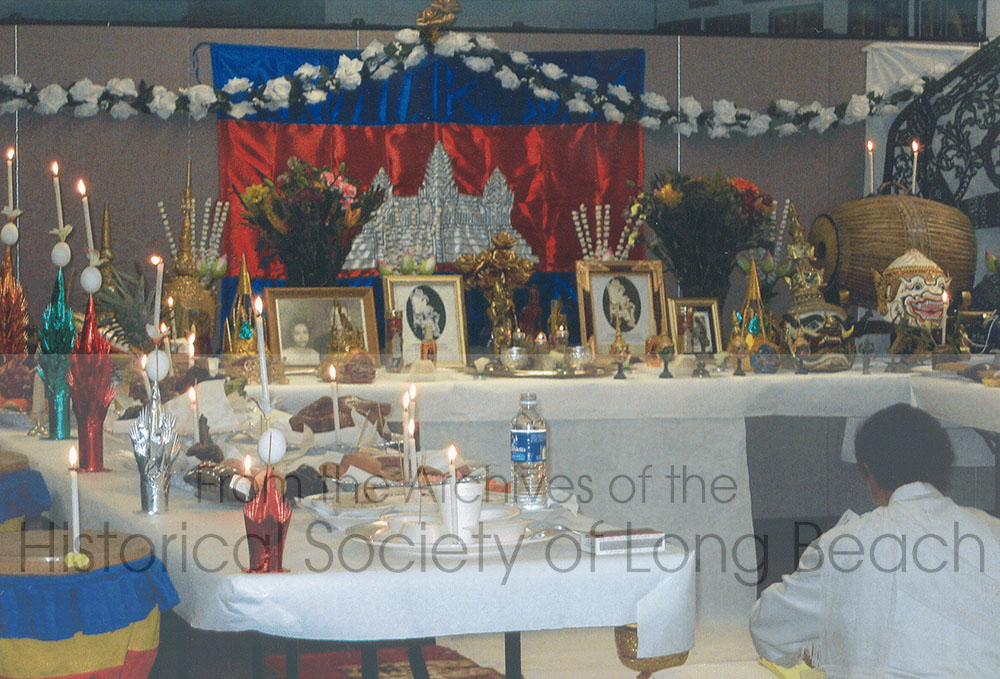



Additional Resources
RECREATING THE ARTS AFTER THE KHMER ROUGE
Dance and music were among the first of the arts to be recreated following the Khmer Rouge. The arts are prominent in each of the other sections of this collection: Years of Turmoil and Pain, Building Community, Cambodian Profiles, and Oral Histories.

Cambodians observe more than twenty secular and religious holidays during the year. The most popular holidays celebrated among Cambodians in the U.S. are Coul Chnam Tmey (Cambodian New Year), held in mid-April, Pchum Ben, observed in mid-October, and Bun Kathin, observed in mid-November. Cambodian holidays follow a lunisolar calendar, so the dates vary from year to year.
Cambodian New Year
In Cambodia Choul Chnam Tmey, which means “entering the new year,” is celebrated over a three- or four-day period beginning in mid-April, at the end of the rice harvest and before the rainy season begins. Unlike other celebrations and ceremonies in Cambodia, New Year is considered a national holiday, and is not centered on a Buddhist observance. Although people set up altars in their homes, visit the temple, and ritually wash the Buddha statue as part of the observances, it is seen more as a social event; a time to gather with family and friends; to relax and play.
Images











Pchum Ben (Ancestor Day)
Pchum Ben is the most important holiday in the Khmer religious calendar. Cambodian Buddhists believe that each year the souls of their deceased ancestors are released for 15 days. At this time, families visit temples, bringing their ancestors’ favorite food, Buddhist ceremonial items, and money. These are offered to the monks who transmit the blessings to the ancestors. The photographs provided here are from two Cambodian Buddhist temples in Long Beach, CA. The video shows a Pchum Ben observance at a temple in Philadelphia, Pennsylvania.
Images





Videos
Bun Kathin
Bun Kathin is one of the annual ceremonies of the Theravada Buddhist calendar. It is usually held in mid-November marking the end of the rainy season in Cambodia. People bring offerings of new robes and other necessities to the monks who do not leave the temple compound during the rainy season. The robes are placed on a gold or silver tray with a beaded cover over them and carried to the temple on their head.
Images





Documents
Additional Resources
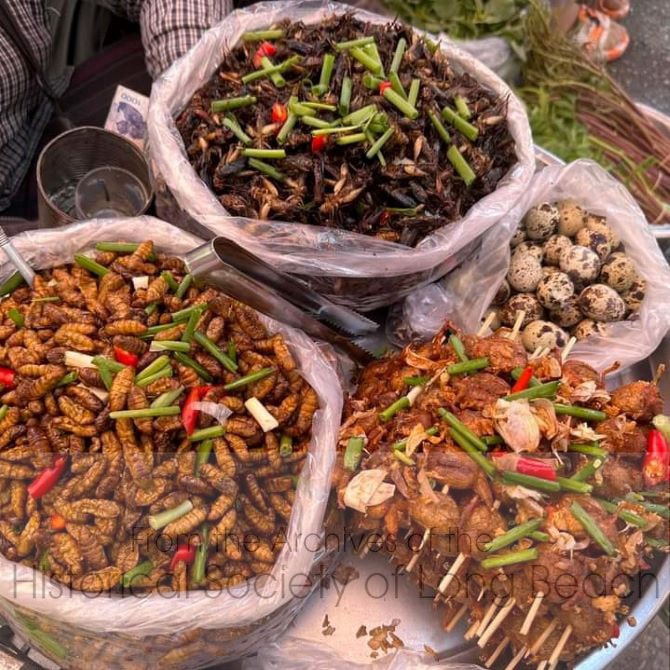
Cambodian cuisine balances sweet, sour, salty, and bitter flavors using key ingredients like palm sugar, tamarind, and fish sauce (prohok). Herbs such as lemongrass, kaffir lime leaves, and basil are commonly grown in home gardens. Spices like turmeric, ginger, and galangal add unique flavors, while chili peppers provide spiciness. Tropical fruits like mangoes, bananas, papayas, pineapples, and dragon fruit are versatile ingredients used in various dishes and desserts.
